Historical and old photos of Grimstad, Agder
|
A small historical reference
Geography: Grimstad is a municipality in Agder county, Norway. It belongs to the geographical region of Sørlandet. The administrative center of the municipality is the town of Grimstad. Some of the villages in Grimstad include Eide, Espenes, Fevik, Fjære, Håbbestad, Hesnes, Homborsund, Jortveit, Kroken, Landvik, Nygrenda, Prestegårdskogen, Reddal, Roresand, Rønnes, Skiftenes, Tjore, Vik, and Østerhus.
The municipality is centered around the little maritime town of Grimstad which is surrounded by many small islands (Skjærgård). There is a harbor, a long pedestrian shopping street, a small market square, Grimstad Church, and a museum dedicated to the early life of Henrik Ibsen, who served as an apprentice to Grimstad’s local pharmacist Reimann, from 1844 to 1847, before leaving Grimstad in 1850. Ibsen's intimate knowledge of the local people and surroundings can be seen in his poem Terje Vigen. The majority of the inhabitants live in and around the town, while the rest of the municipality is rural and heavily forested.
The 304-square-kilometre (117 sq mi) municipality is the 276th largest by area out of the 422 municipalities in Norway. Grimstad is the 50th most populous municipality in Norway with a population of 22,692. The municipality's population density is 83.3 inhabitants per square kilometre (216/sq mi) and its population has increased by 16.2% over the last decade.
Date of foundation: June 6, 1816
History:
Population: 23 246
Sights:
|

Greenhouses, 1951 |
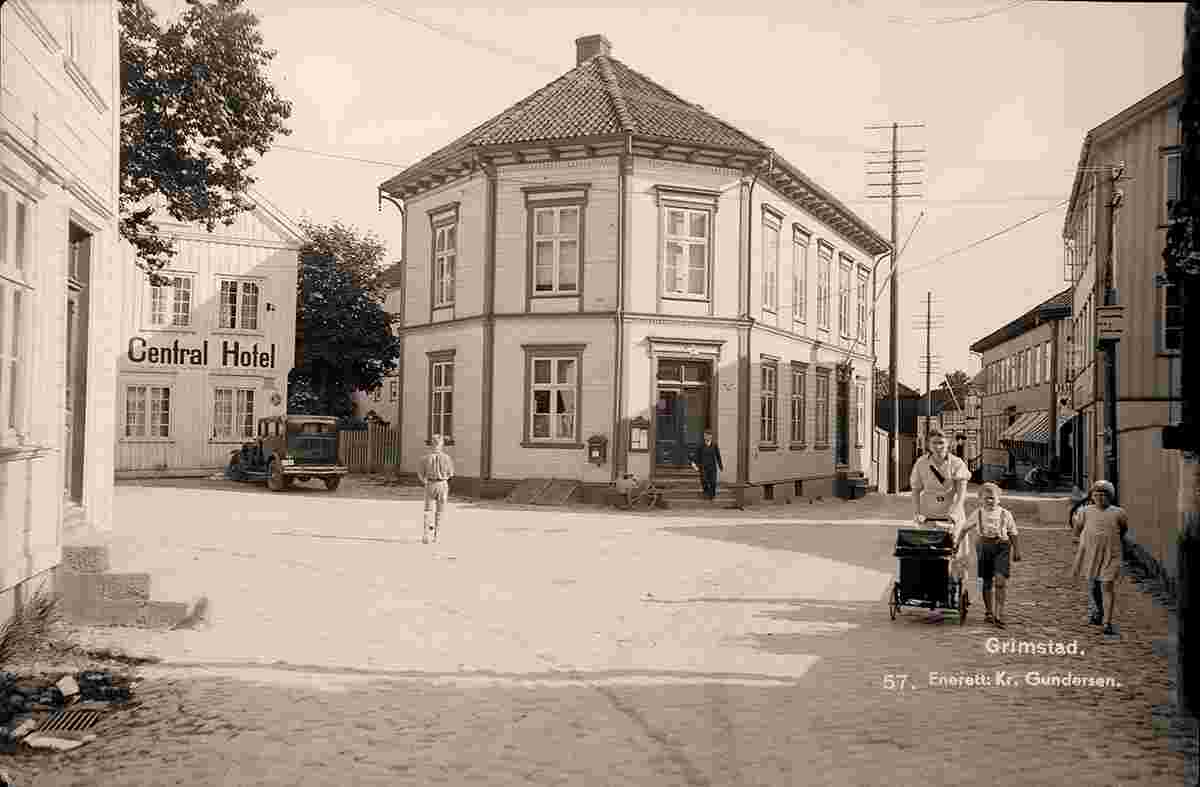
Hotel 'Central', between 1900 and 1950 |

Panorama of city street, between 1900 and 1950 |

Panorama of city street, between 1910 and 1920 |
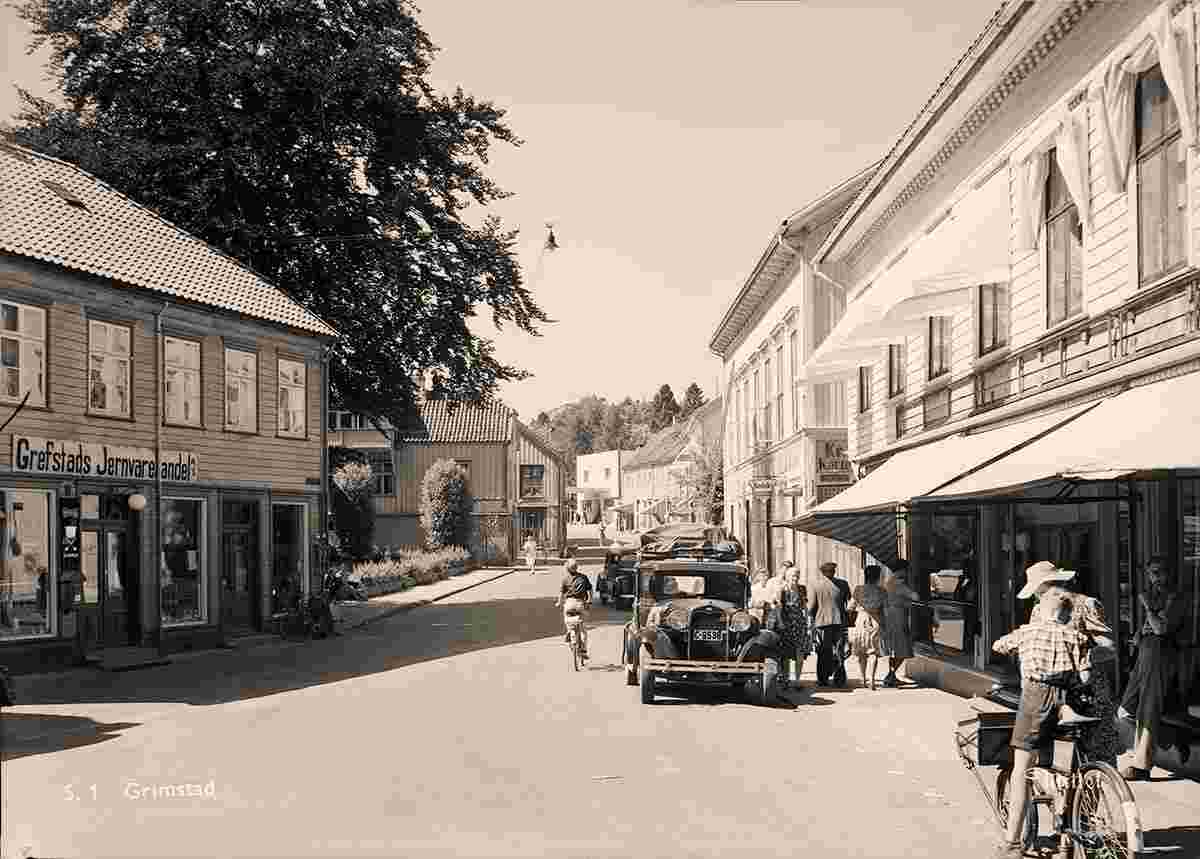
Panorama of city street, 1950 |
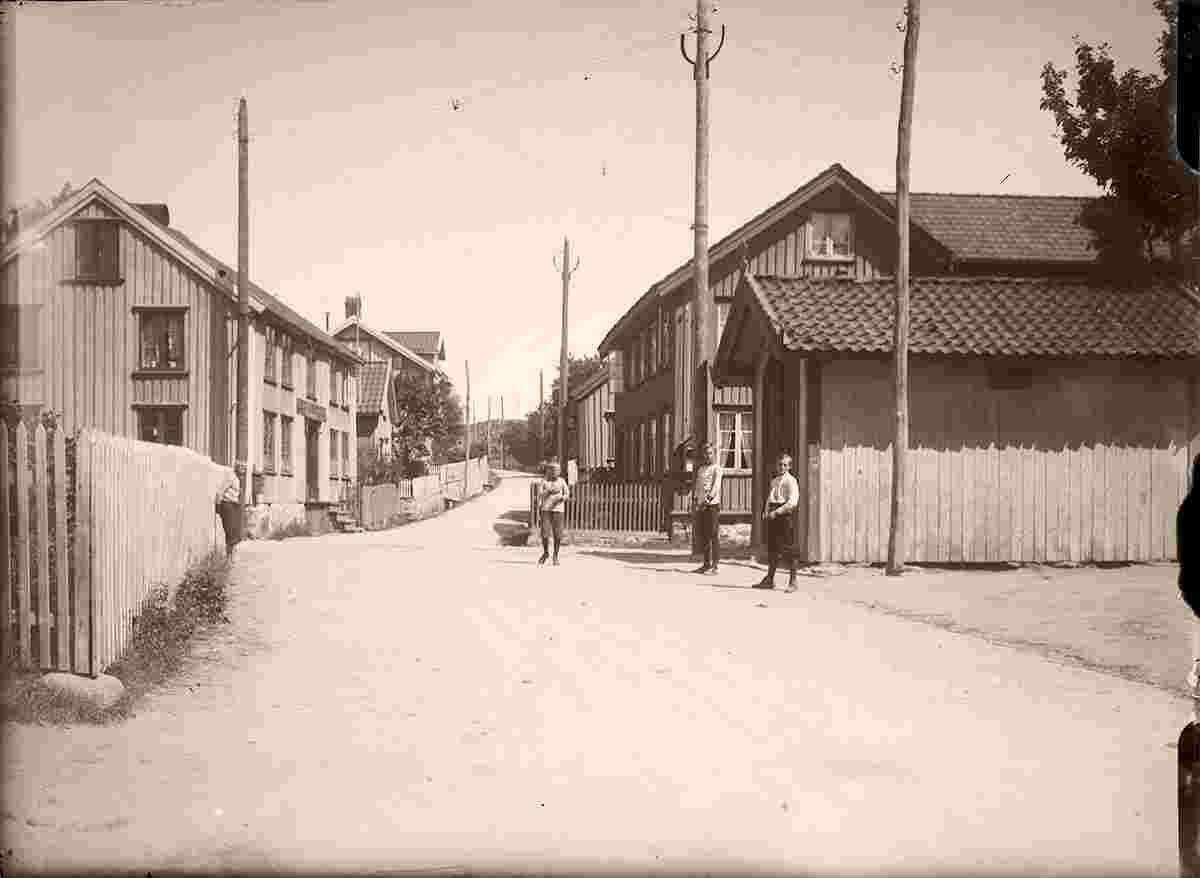
Panorama of city street, children, between 1910 and 1920 |
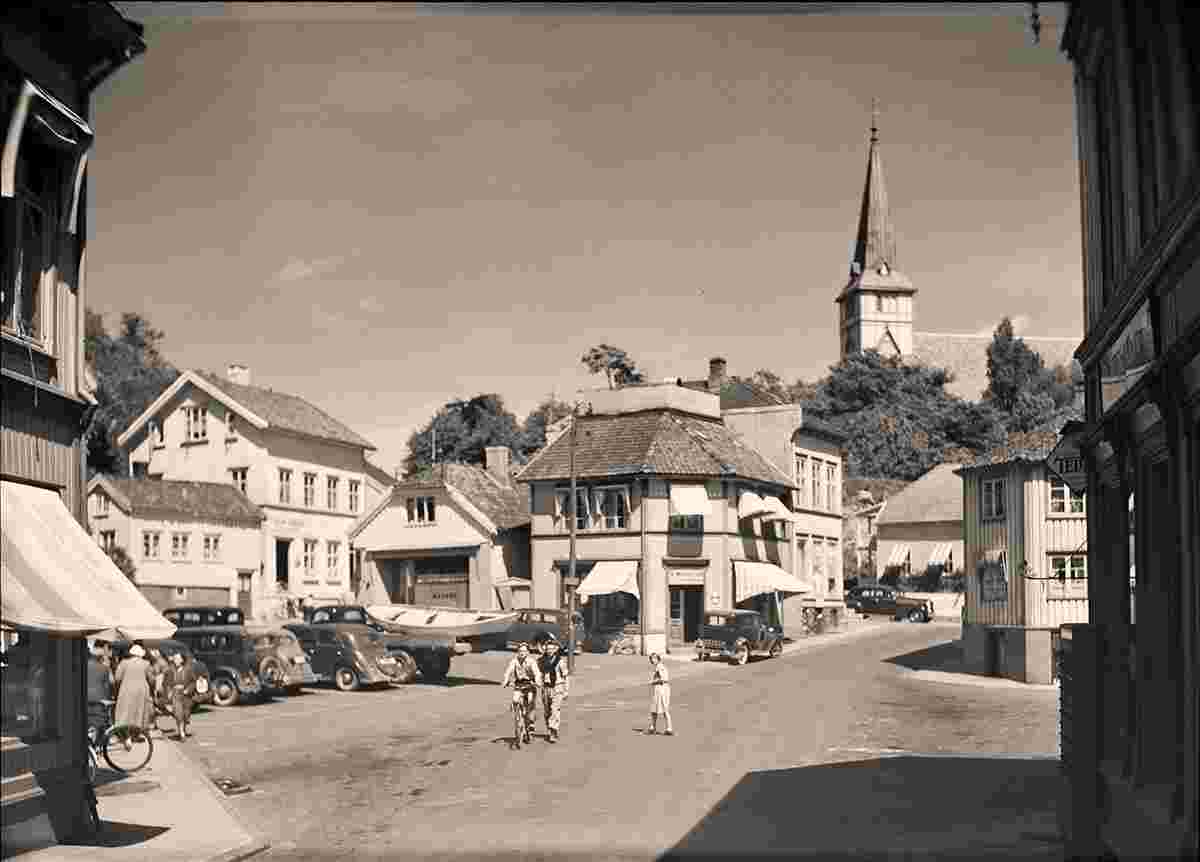
Panorama of city street and square, between 1950 and 1970 |
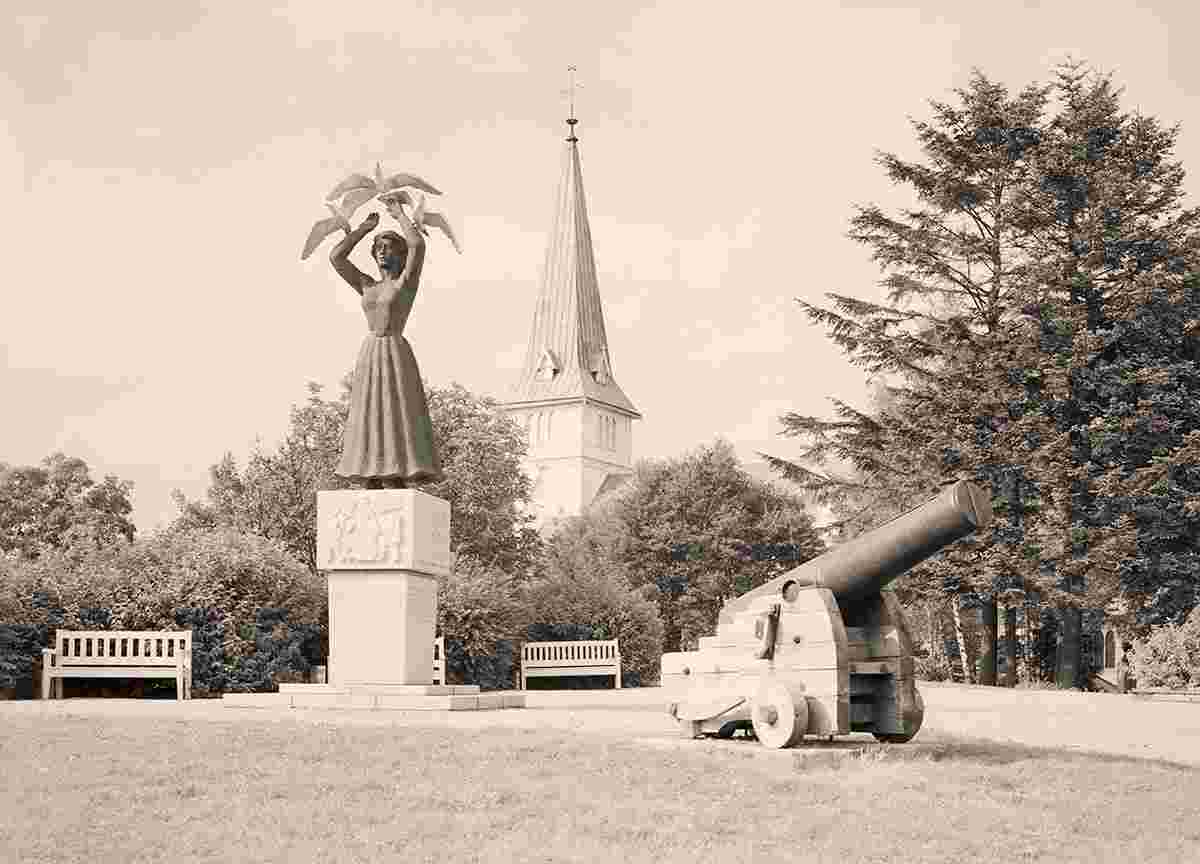
Park, memorial, 1957 |
History
Grimstad lies within the boundaries of the ancient parish of Fjære. It is reportedly first mentioned as a harbor in the 16th century. Eight years after he was deposed, Christian II of Denmark–Norway (1513–1523) attempted to recover his kingdoms. A tempest scattered his fleet off the Norwegian coast, and on 24 October 1531, they took refuge at Grimstad. On 1 July 1532, he surrendered to his rival, King Frederick I of Denmark, in exchange for a promise of safe conduct. King Frederick failed to honor his promise and imprisoned Christian until he died.
An inn is recorded at Grimstad as early as 1607. In 1622, Grimstad became a recognized harbor under the town of Arendal. By 1747, Grimstad was identified as a sailing community and a recognized haunt of smugglers. During the Napoleonic Wars, England blockaded Norway. In 1811, an English brig entered the harbor to capture blockade runners, but was vigorously repulsed and did not return.
John Frederik Classen, who owned the Frolands Værk (an ironworks), obtained concessions to export and import through Grimstad and bypass Arendal with its customs dues. Grimstad was awarded market town status in 1816.
The Nørholm farm in Grimstad was the home of Knut Hamsun in the early 20th century.
Origin: en.wikipedia.org
|








